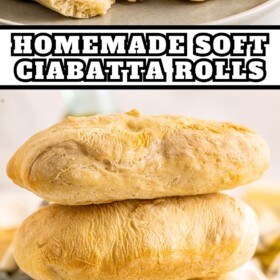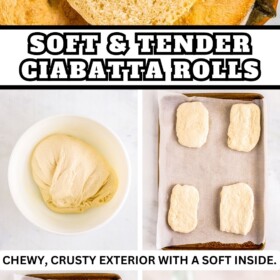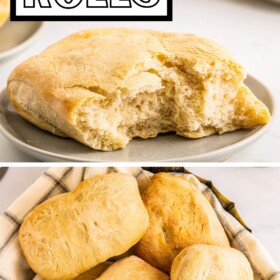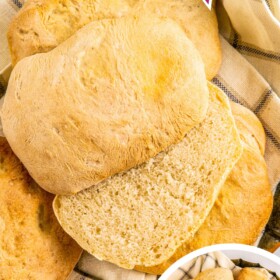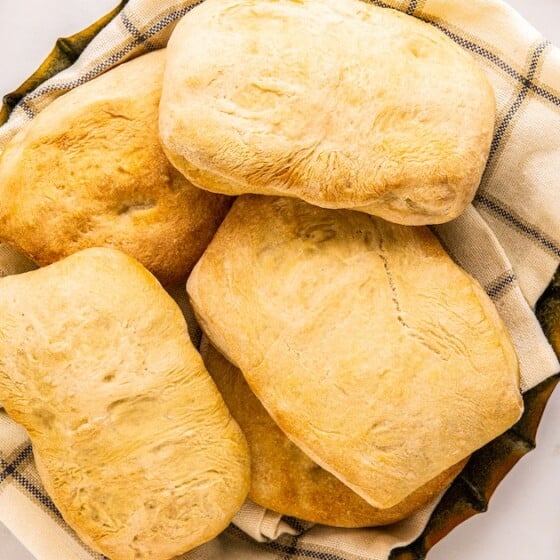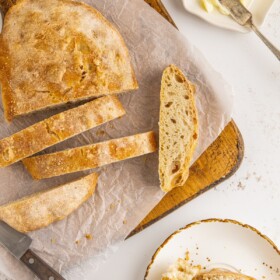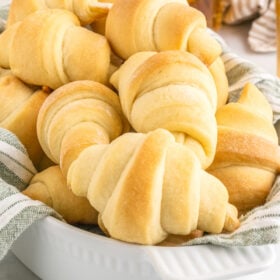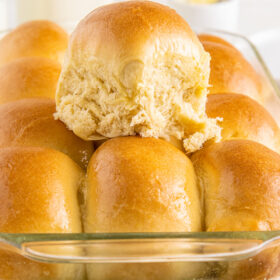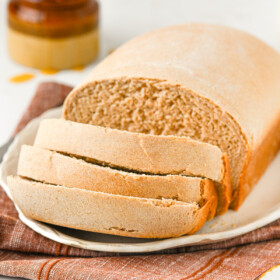Light, airy and chewy Ciabatta Rolls. Baked to a lovely golden brown, these rolls have a perfectly chewy, crusty exterior with a soft and tender inside. Perfect for sandwiches, or for serving with bruschetta!
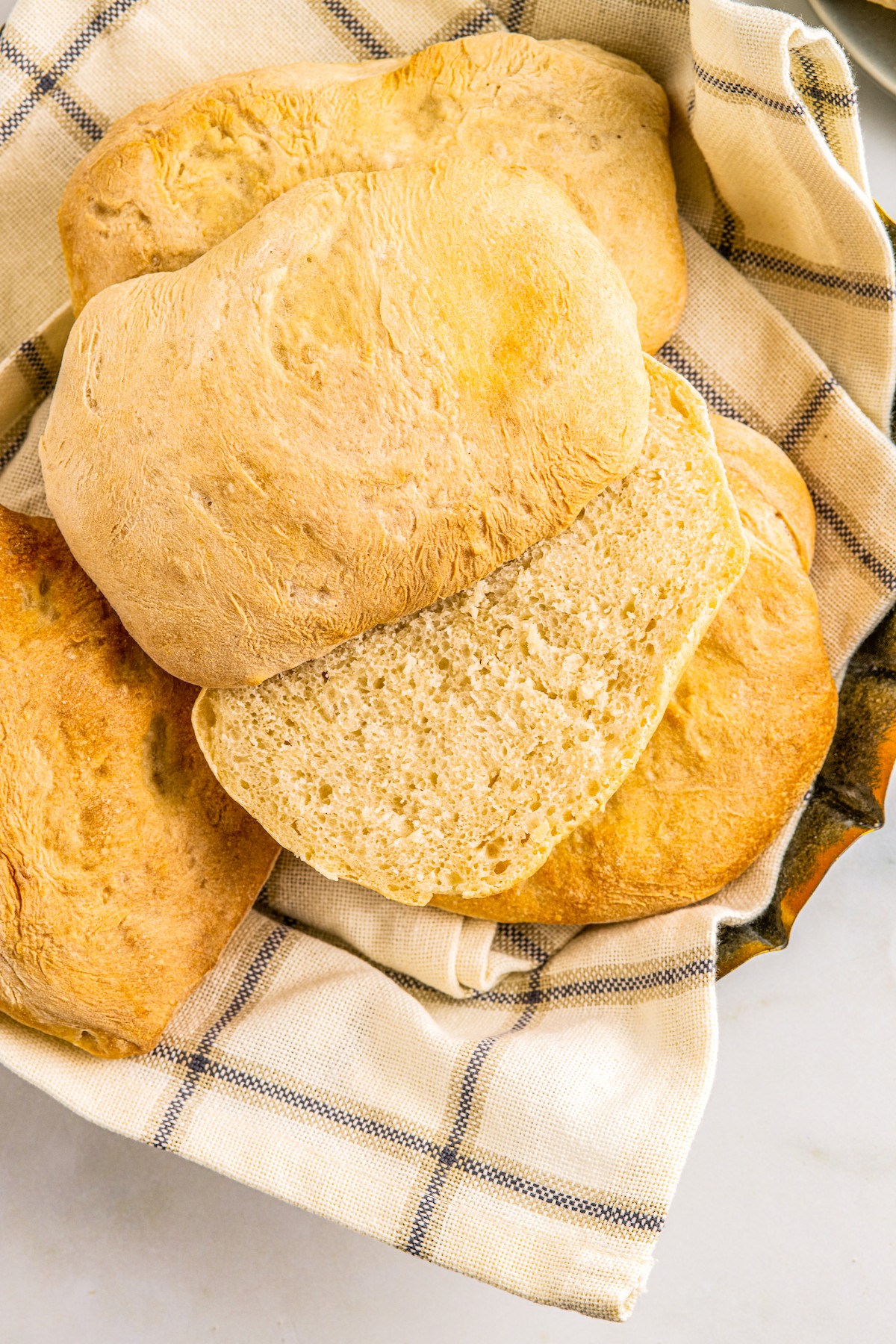
Homemade Ciabatta Rolls from Scratch!
Artisan breads are a joy to bake and eat, and ciabatta is no exception. This traditional Italian bread is often served in restaurants for gourmet sandwiches, appetizers, and that kind of thing. And for good reason! If you love crispy, chewy bread with a light, soft texture inside, ciabatta is calling your name.
This easy recipe will show you the ins and outs of making ciabatta rolls at home. Ciabatta rolls are individually-sized and easy to store, and you get more crusty exterior by baking up rolls. Sounds great right?
(On the other hand, if you want to make ciabatta bread instead of rolls, that works too. Just check out this Ciabatta Bread recipe – it’s a keeper.)
These Ciabatta Rolls Are…
- Budget-Friendly. You literally make ciabatta rolls with flour, yeast, and salt. No fancy ingredients, and very budget-friendly.
- Simple to Make. If you are a bit intimidated by the thought of making dinner rolls, don’t be! These are so simple. Handling the soft, sticky dough is different than other bread doughs, but a bench scraper and the right technique is all you’ll need.
- Prefect Texture. The interior of these rolls is light, airy, and beautiful, while the outside has the perfect amount of chewy bite.
- Versatile. You can use ciabatta rolls for almost any meal that calls for sandwich bread or dinner rolls.
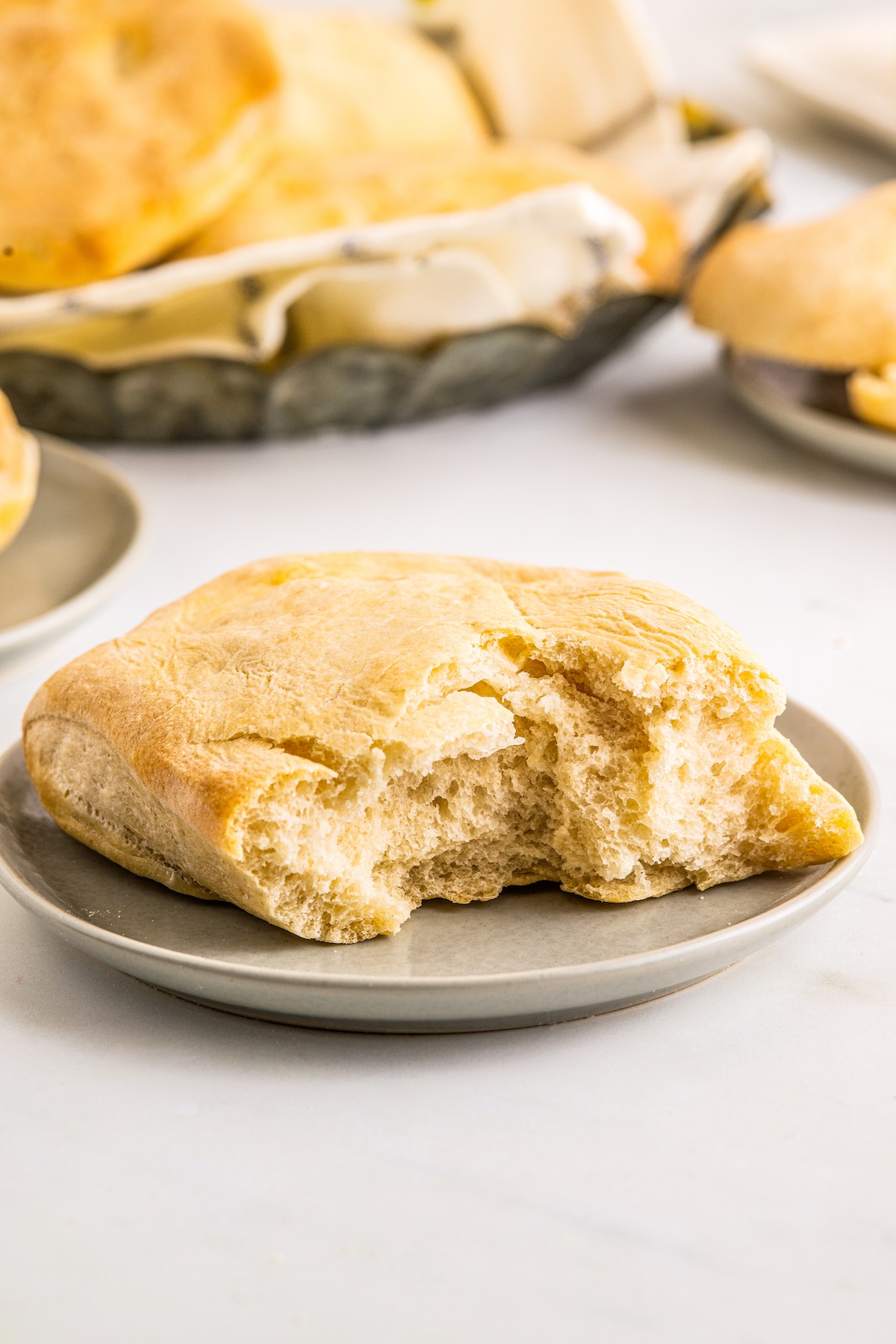
What You’ll Need
One thing that I love so much about baking breads and rolls is that you usually only need a couple of basic ingredients, but those ingredients can be prepared in so many different ways. This is all you need for ciabatta rolls:
- Flour: You will need plain, all-purpose flour. Some for the starter, and some for the dough.
- Water
- Yeast: Nothing fancy, just active dry yeast. Again, some for the starter, and some for the dough.
- Salt
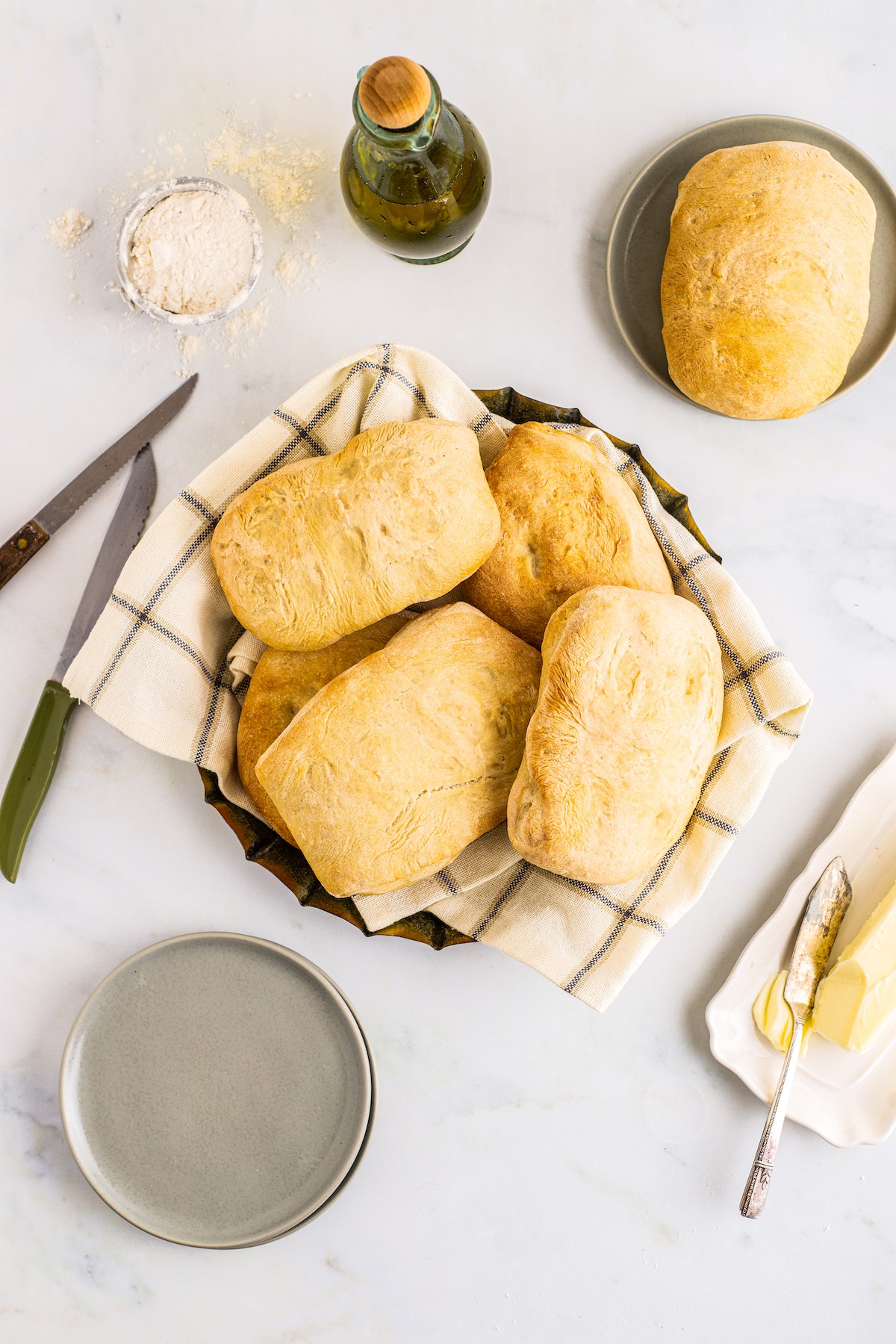
How to Make Ciabatta Rolls
Since you’ll be making a starter, you will need to start this recipe the night before! But don’t worry – it’s so simple to do. Here are the steps for the whole process, start to finish, with photos.
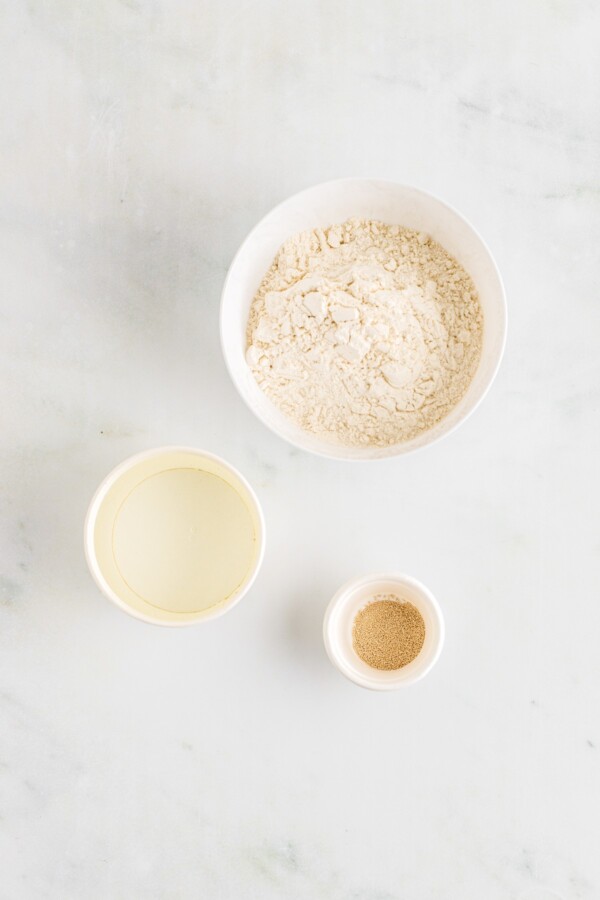
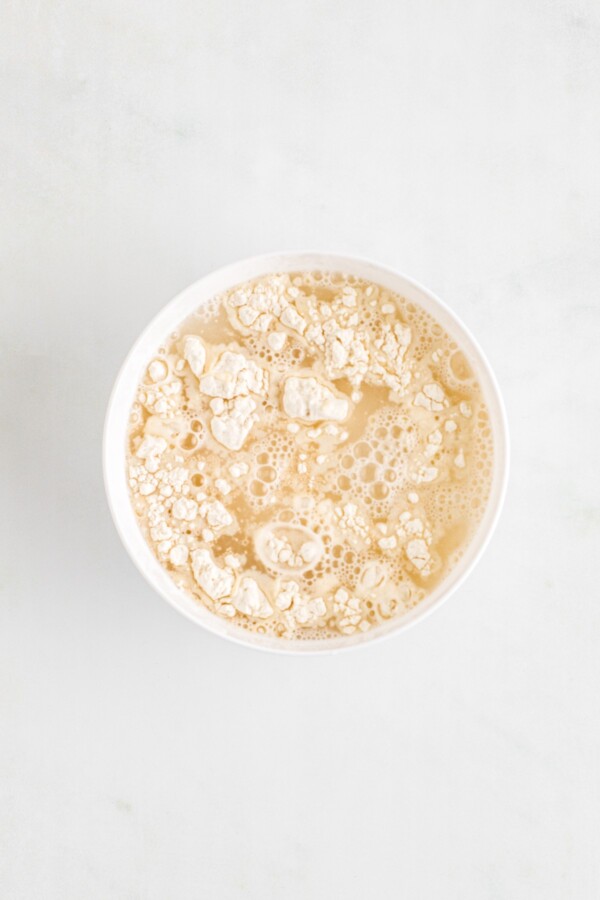
- Make the Starter. The night before making the rolls, whisk the flour, water and yeast together in a medium-sized bowl. Cover the bowl with plastic wrap, and let it sit out on the counter overnight. It should be large and bubbly the next day.
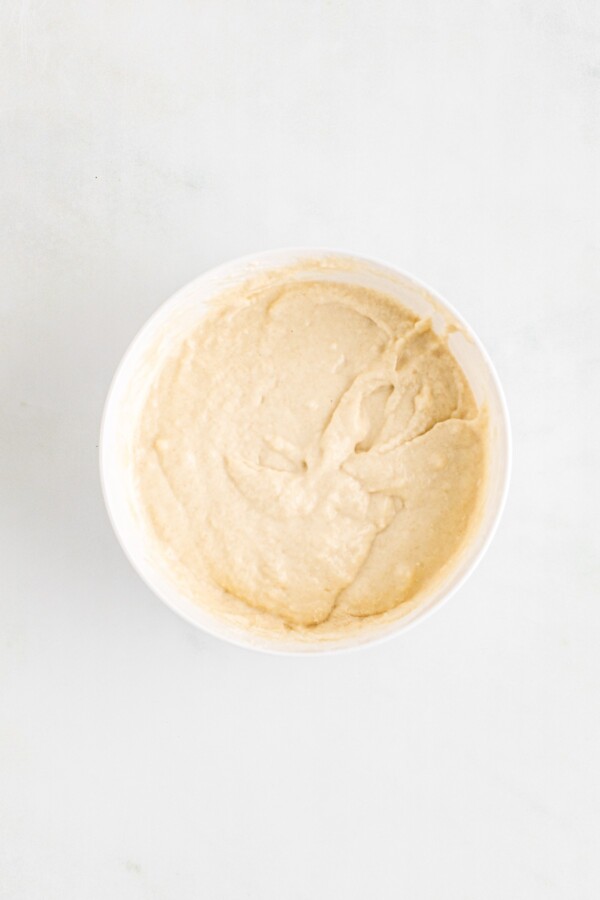
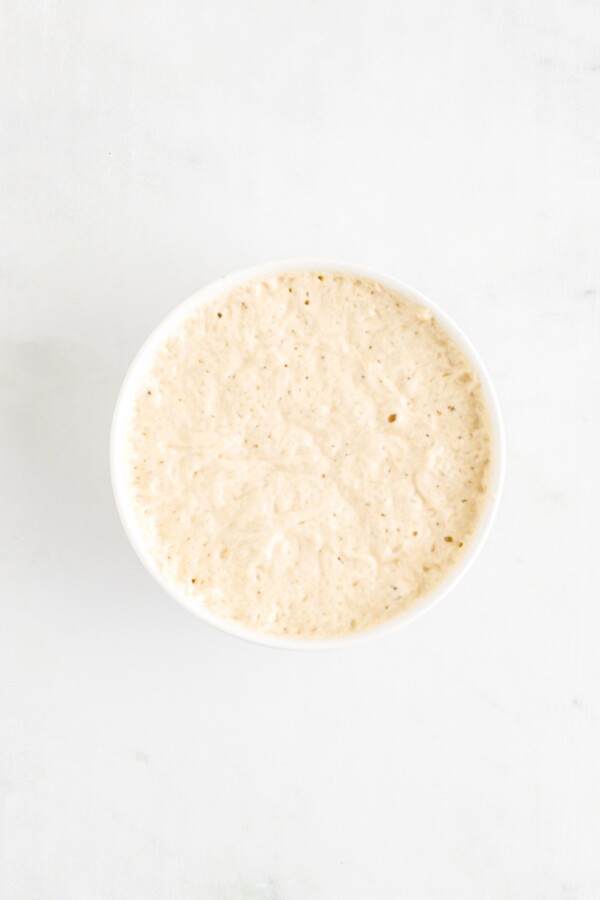
- Mix the Dry Dough Ingredients. The next day, combine your flour, yeast, and salt for the dough in a stand mixer. Use the hook attachment, since we’ll be kneading dough, and give the ingredients a stir to combine.
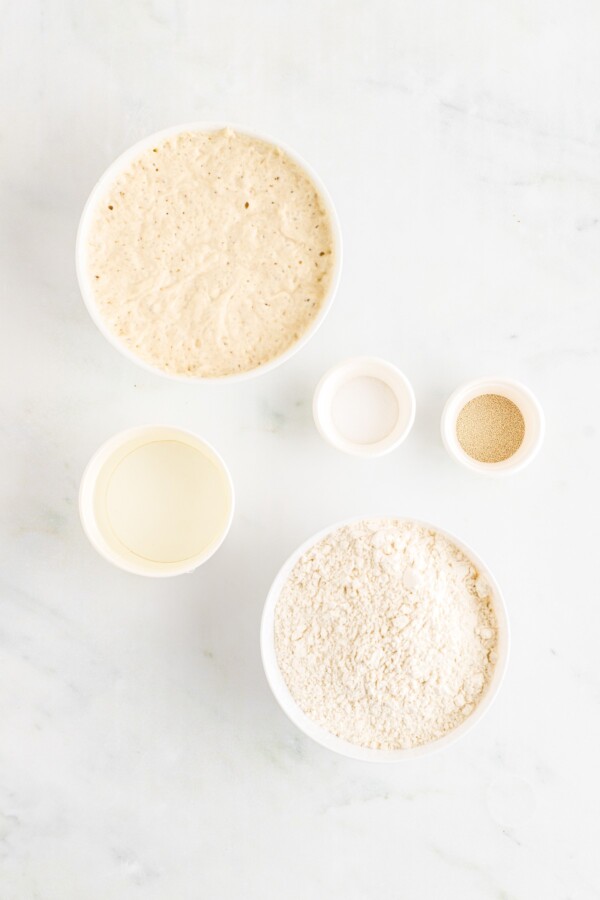
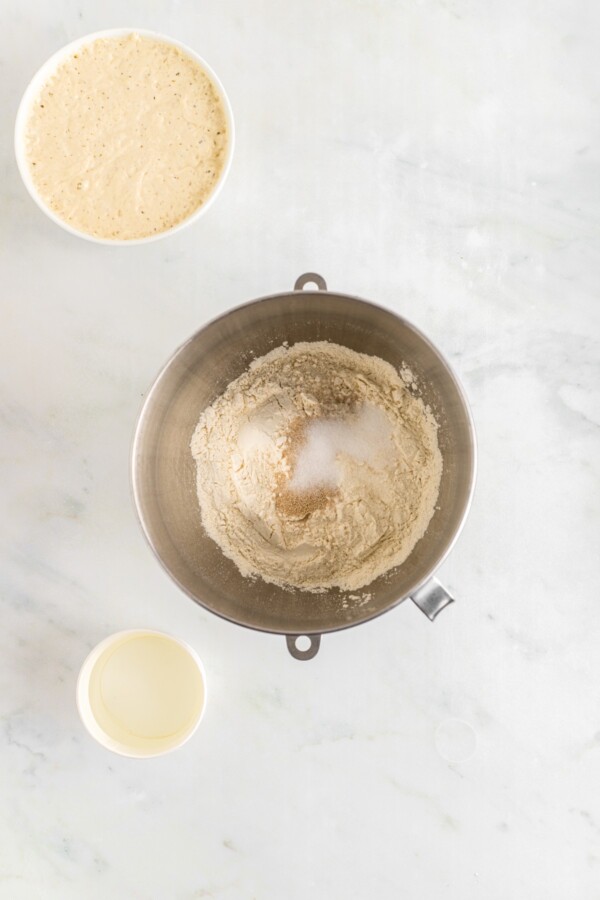
- Add the Wet Dough Ingredients. Then add in your starter from the night before, and the water. Knead these ingredients for 10 minutes. The dough will be very sticky.
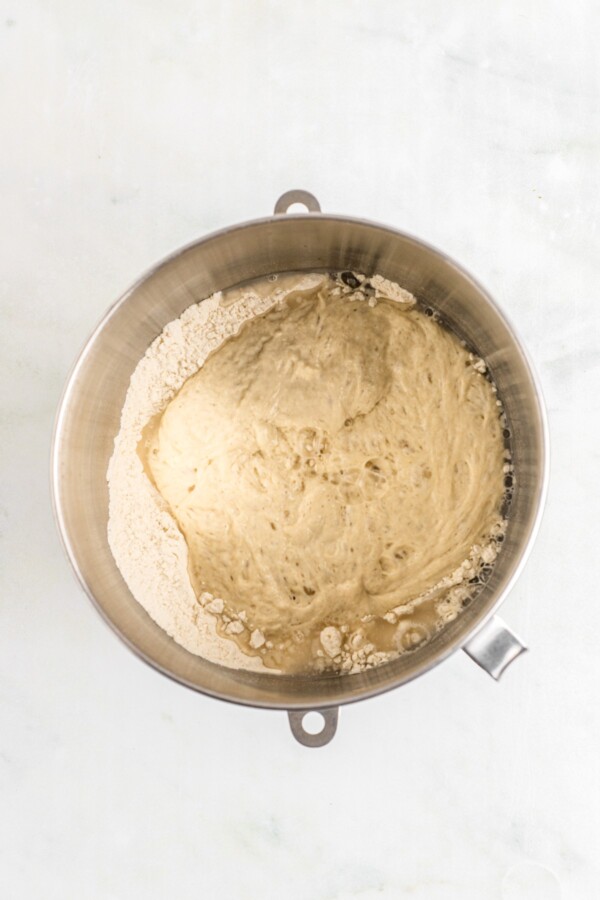
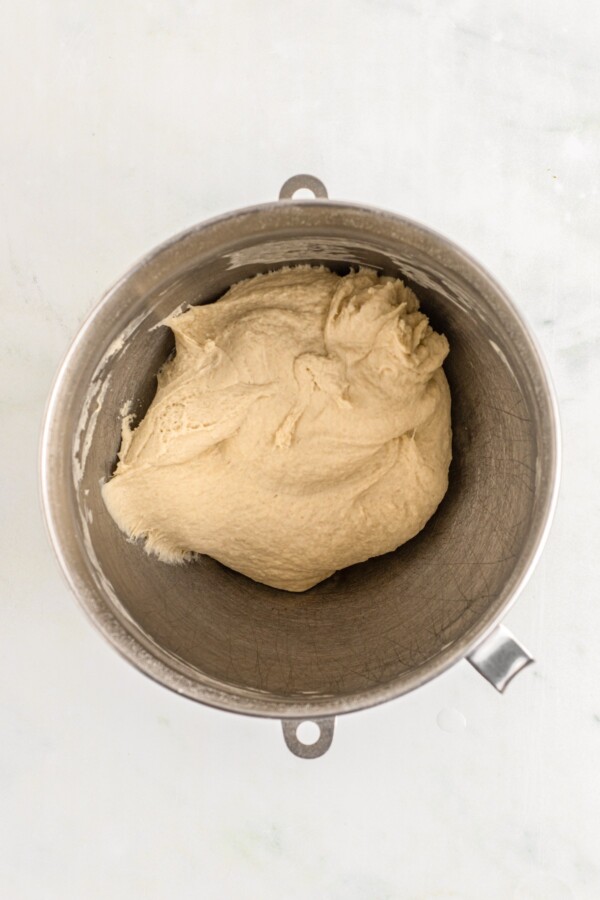
- First Rise. Grease a large, clean bowl and place your dough in it. Let it rise for about 30 minutes.
- Stretch and Fold. With greased hands, stretch and fold each side of the dough to the opposite side.
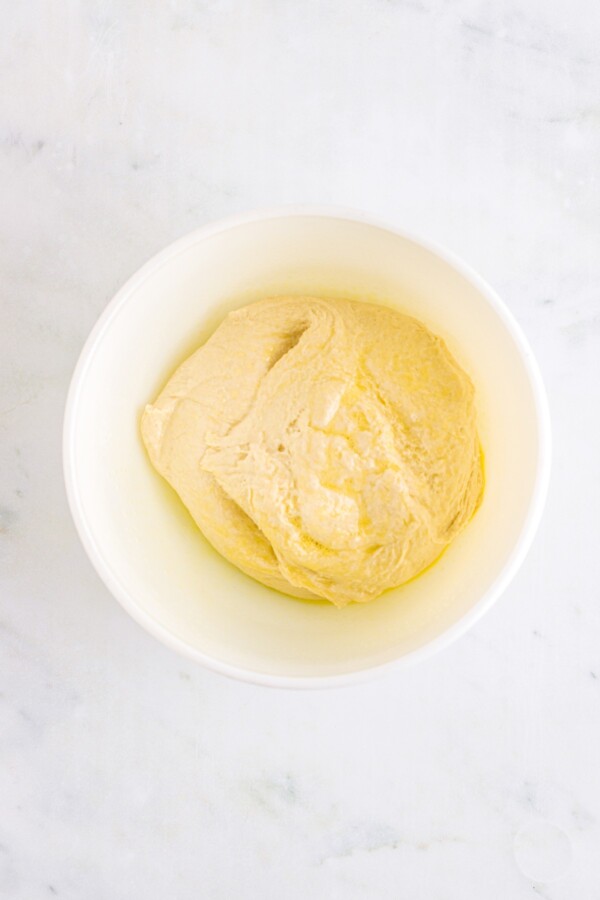
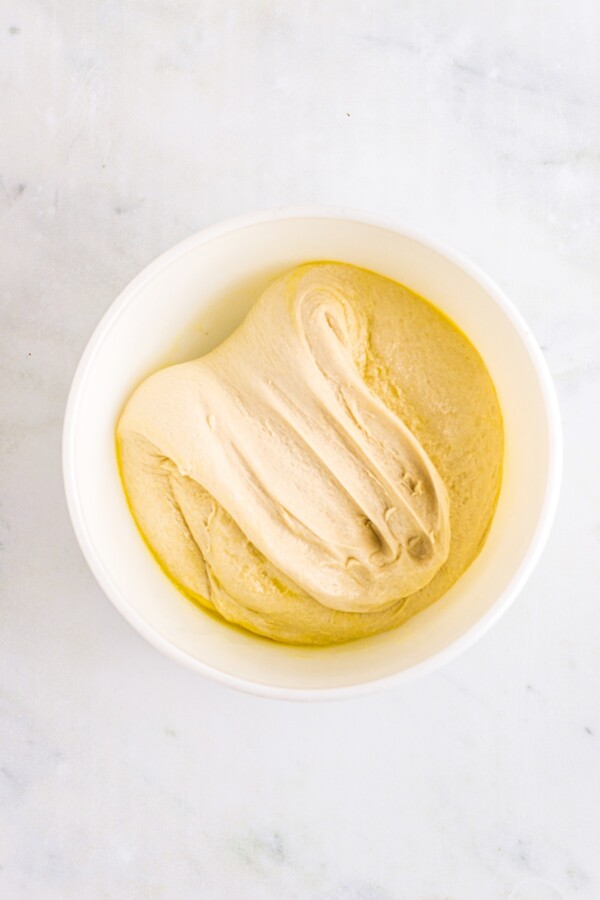
- Second Rise. Re-cover the bowl, and let the dough rest for an additional 30 minutes.
- Repeat Three (3) Times. Repeat this process another 3 times, for a total of 4 stretches/folds and 2 hours total of rest time. After the last stretch, let the dough rest for another 30 minutes.
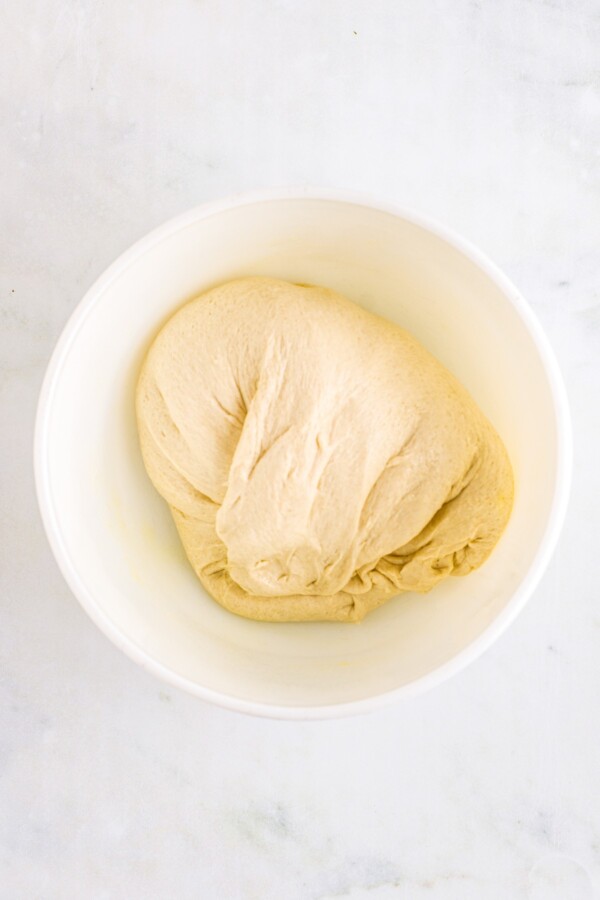
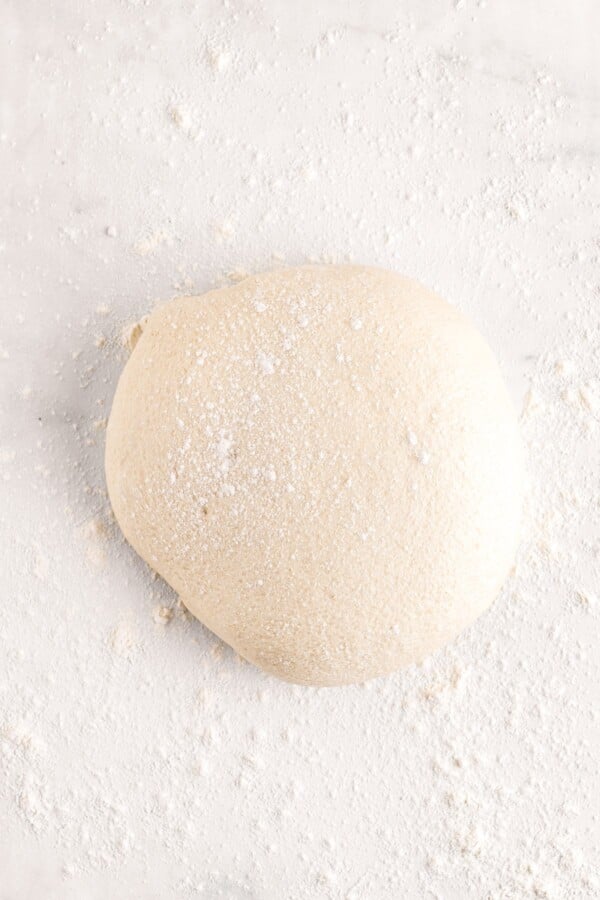
- Shape the Rolls. Once the dough has rested for the last time, turn it out onto a clean, lightly-floured surface. Roll the dough out into a log, as evenly as possible. Then cut the log into 6 equal pieces. Press each piece into a rough square.
- Rest the Rolls. Place the rolls onto a greased, parchment-lined baking sheet. They need plenty of room, so space them about 3 inches apart. Let the rolls rest for 30 minutes, and during that time, you can preheat the oven to 425°F.
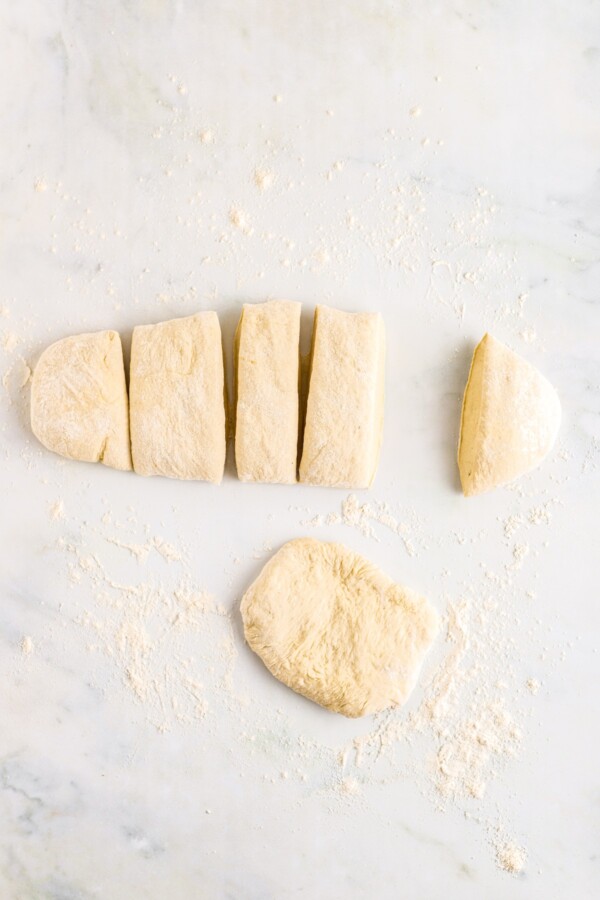
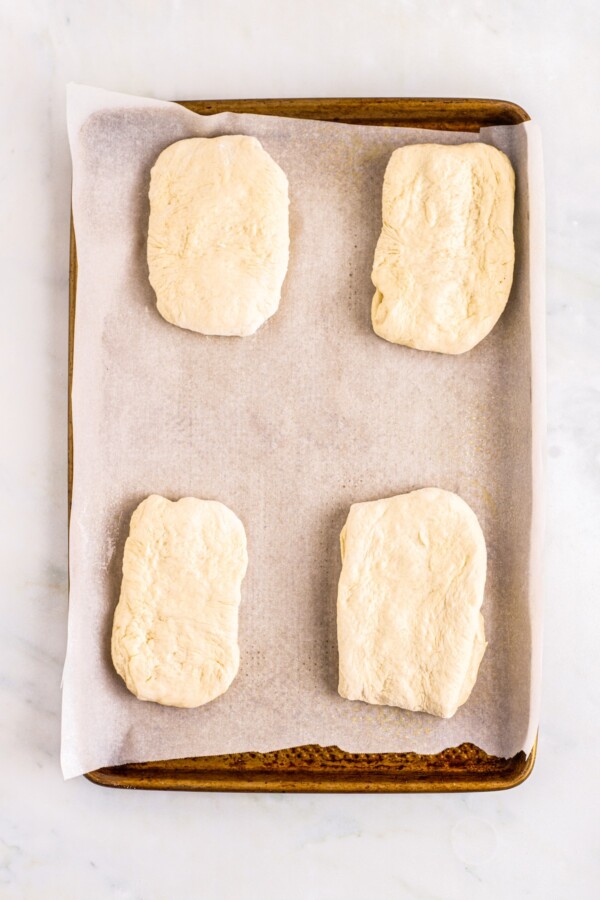
- Moisten with Water. Once the rolls have rested, spray each one generously with water. They should look quite wet.
- Bake. Place the on the center oven rack, and bake for about 18 minutes, or until golden and baked through.
- Cool the Ciabatta Rolls. Once the rolls are baked, remove them from the oven and let them cool down a bit.
- Enjoy! Serve warm, or cool the ciabatta rolls completely if you want to serve them at room temperature.
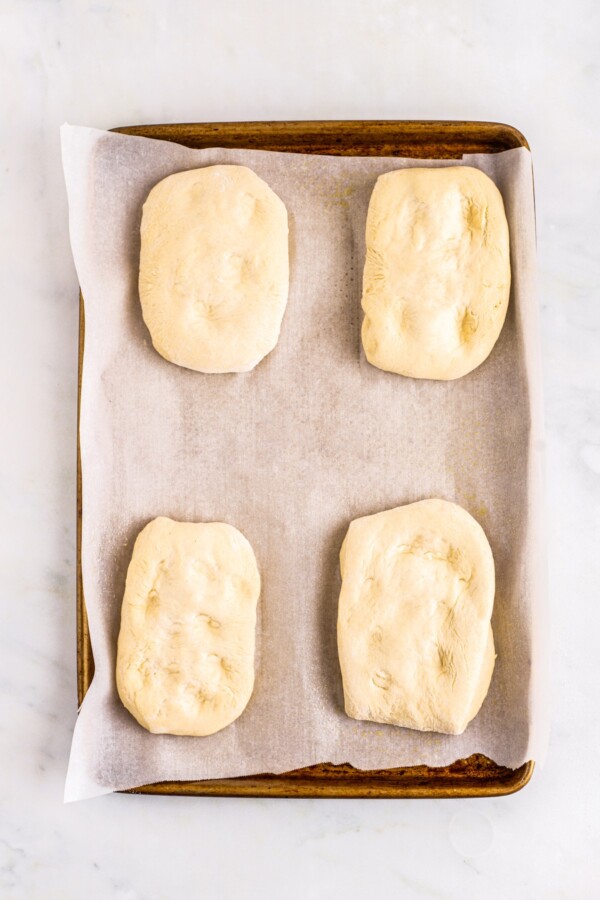
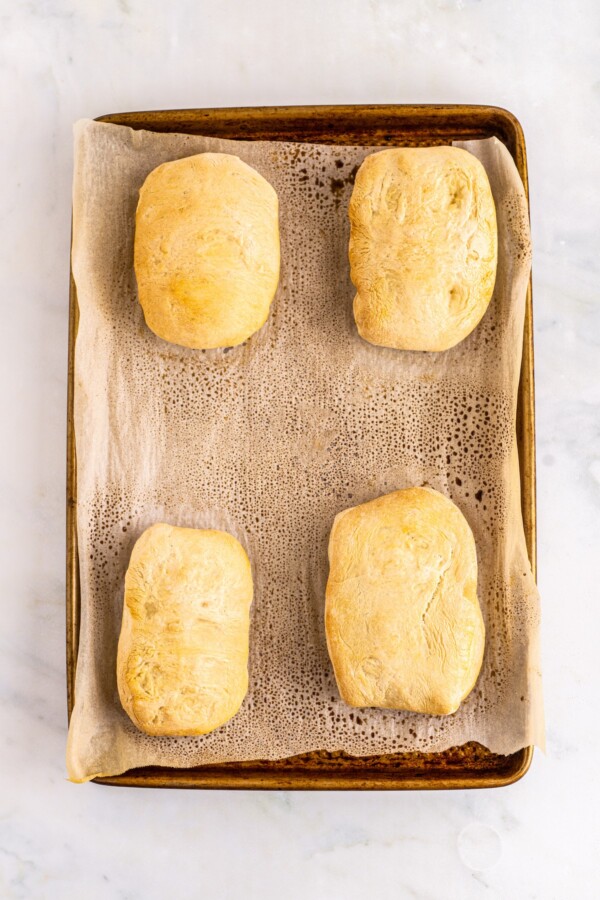
What Makes Ciabatta Different from Other Breads?
Ciabatta is famous for its texture, plain and simple. This bread has a chewy, well-baked outside, similar to other artisan breads, but the inside is totally different: impossibly light and airy. To get that texture, the outside of the dough needs to be sprayed with water before baking, or steamed in the oven.
The dough itself is also moist and sticky from the starter and water in the recipe. That can make it a bit daunting for some bakers who are used to a more dry, easy-to-handle dough like plain bread dough. However, don’t be intimidated! It’s easier than it seems, and the results are well worth the effort.
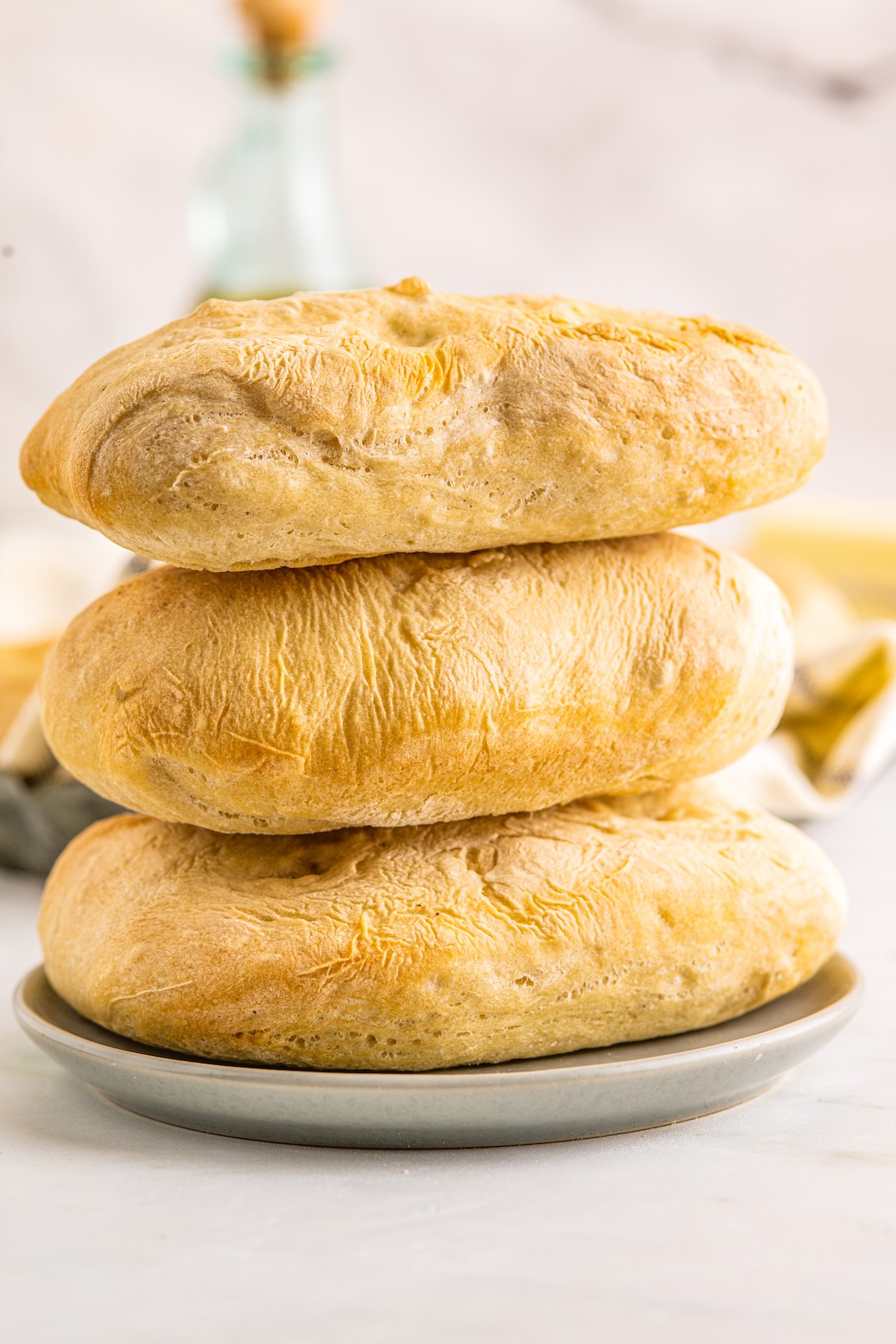
Baker’s Notes
Since ciabatta is known for its special texture, I’m including some helpful baking notes to make sure your bread gets that texture. These tips will ensure that your ciabatta rolls turn out just right.
- Stretching and Resting: It is important to follow the stretching and rest instructions as they are. This builds up the gluten and is what gives the rolls the airy texture they have.
- Sticky Dough: The dough is quite sticky – as is normal. You can use a bench scraper to help work and shape the dough into individual rolls.
- Water vs. Steam: If you don’t have a good way to spray the rolls with water (like a squirt bottle), you may add steam to the oven by preheating it with a baking sheet of water on the bottom rack. You will have to quickly place the baking sheet of rolls into the oven to prevent too much steam from escaping.
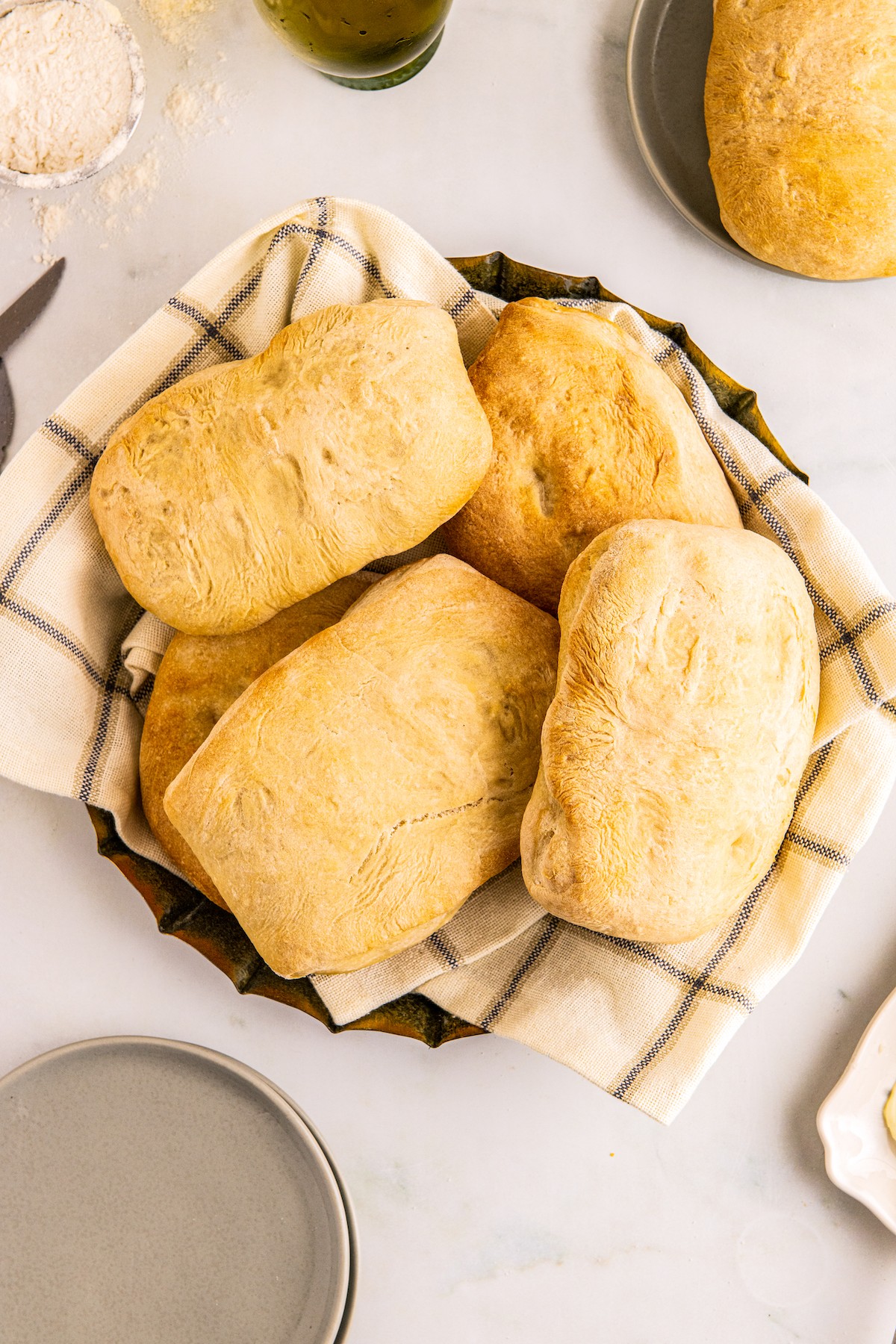
What to Serve with Ciabatta Rolls
Ciabatta rolls are so, so versatile. You can serve them for sandwich buns, or you could top them with your favorite bruschetta toppings, or you can serve them as a generous-sized dinner roll with just about anything.
- Chicken Florentine: This creamy, sauce Chicken Florentine is crying out for something to soak up that luscious sauce. Ciabatta rolls? Perfection.
- Chicken Parmesan: Mozzarella Stuffed Chicken Parmesan, is another saucy dish that works well with a starchy side. You could do pasta, of course, but ciabatta would be something a little different and a whole lotta delicious.
- Tuna or Chicken Salad: Stuff them with chicken salad or my favorite Loaded Tuna Salad for a decadent lunch. Add cheese and toast it for an amazing Tuna Melt! Any sandwich is immediately upgraded with homemade bread.
- Soup: Any soup is better with bread, so serve up your homemade rolls alongside a warm, hearty bowl of your favorite. To keep the Italian theme going, try making Pizza Soup. It’s a zesty, cheesy soup recipe you’ll adore.
Storing and Freezing Guidelines
Ciabatta rolls may be stored in an airtight container or baggie for up to 3 days. You can also freeze the cooled rolls in freezer bags for about 3 months. Thaw at room temperature before serving.
Ciabatta Rolls Recipe
Ingredients
Starter:
- 1 ⅓ cups all purpose flour
- 1 cup water
- ¼ teaspoon active dry yeast
Dough:
- All of the starter from above
- 2 ¾ cups all purpose flour
- 1 ½ teaspoons active dry yeast
- 1 ½ teaspoons salt
- ¾ cup water
Instructions
- Starter: Night before making rolls: In a medium sized bowl, whisk to combine the flour, water and yeast. Cover with plastic wrap and let set out on the counter overnight. It should be large and bubbly the next day.
- Dough: In the bowl of a stand mixer fitted with a hook attachment combine the flour, yeast and salt. Whisk together to combine.
- Add in starter from the night before and water. Knead for 10 minutes. The dough will be very sticky. Grease a separate large bowl. Transfer the dough into the greased bowl and cover with plastic wrap. Let the dough rise for 30 minutes.
- With greased hands, stretch and fold each side of the dough to the opposing side. Re-cover and let rest for an additional 30 minutes.
- Repeat this process another 3 times for a total of 4 stretches and 2 hours of rest time. After the last stretch, let the dough rest for another 30 minutes.
- Once the dough has rested for the last time, remove it from the bowl and turn it out onto a clean, lightly floured surface. Roll out into a log, as even as possible. Cut into 6 equal pieces. Press each piece into a rough square.
- Place the rolls onto a greased, parchment lined baking sheet, about 3" apart. Let the rolls rest for 30 minutes. Preheat the oven to 425°F.
- Once the rolls have rested, spray each one generously with water. They should look quite wet. Place rolls into the oven on the center rack. Bake for 18 minutes, until golden and baked through.
- Once baked, remove from the oven. Allow the rolls to cool down a little before serving warm, or cool completely if you want to serve them at room temperature.
Notes
Nutrition
Categories:
More Classic Yeast Roll Recipes
- Homemade Crescent Rolls
- Soft Dinner Rolls
- Brioche Buns
- Homemade Hawaiian Rolls
- Dinner Potato Rolls
- Copycat Texas Roadhouse Rolls
Post may contain affiliate links. Read my disclosure policy.

